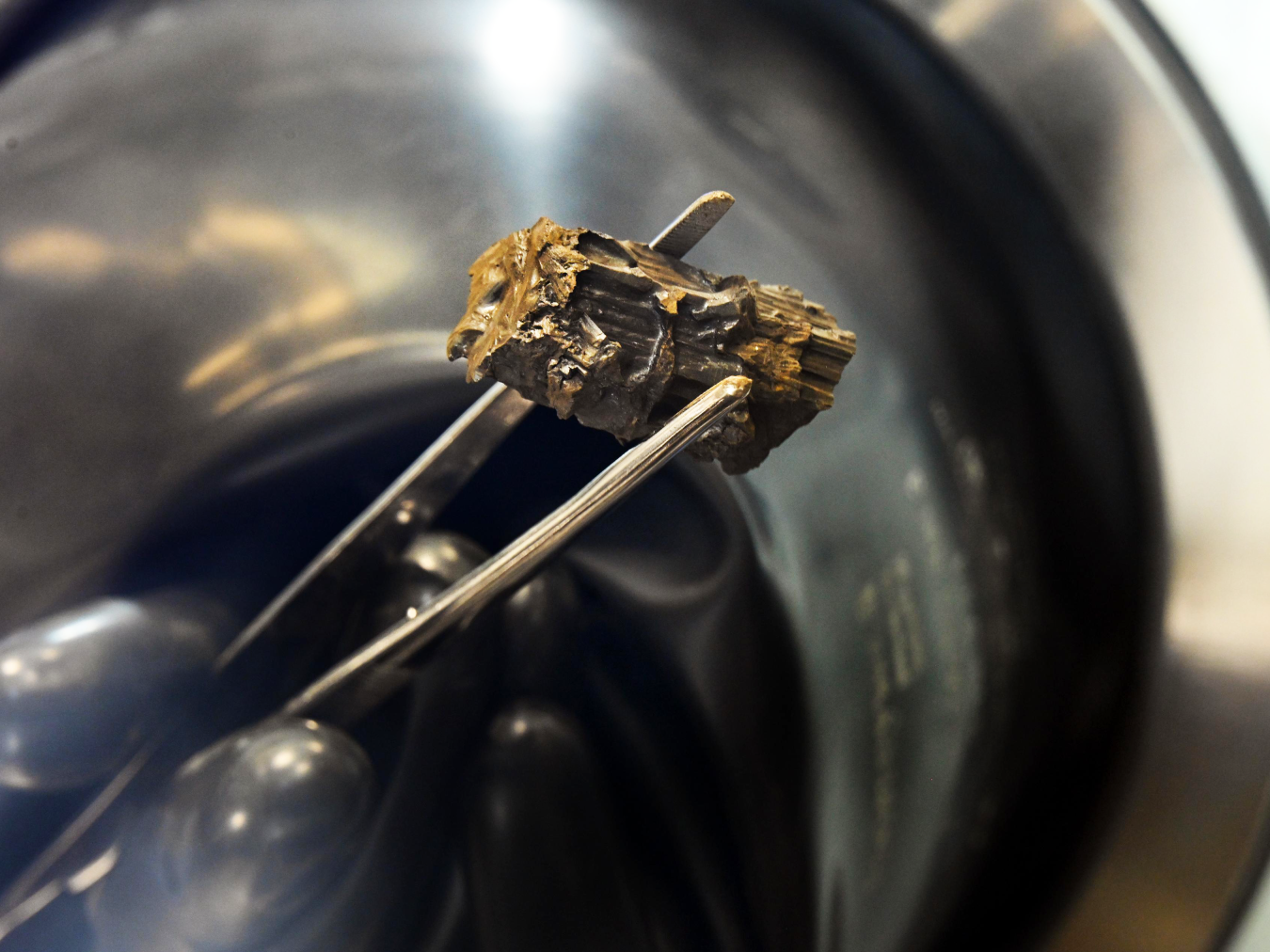Researchers at Idaho National Laboratory successfully demonstrated an efficient way to produce fuel for the world’s first fast-spectrum, salt-fueled reactor test.
March 19, 2025Researchers at Idaho National Laboratory (INL) successfully demonstrated an efficient way to produce fuel for the world’s first fast-spectrum, salt-fueled reactor test.
The process will help expedite the production of fuel needed to turn on the Molten Chloride Reactor Experiment (MCRE), which will allow researchers to advance an unexplored class of reactors.
Producing Usable Fuel
In 2020, INL researchers began designing a fuel salt synthesis line, which is the process used to create molten chloride fuel salt.
The team needed to make 18 kilograms of fuel salt at a time while converting 90% of uranium metal feedstock into uranium chloride fuel salt – an amount that had never been reached before.
At first, the team was only able to convert up to 80% of uranium metal and produce 10 kilograms of fuel salt per batch. They hit a turning point last summer after developing a new step to improve uranium utilization, resulting in the conversion of 95% of uranium metal and the production of 18 kilograms of fuel salt. However, it took roughly 200 hours, which is not a sustainable production rate.
The team brought in other experts from INL, Southern Company, and TerraPower to help design a series of experiments aimed at reducing the batch time. Now they can sustainably produce 18 kilograms of fuel salt in 8 hours and will soon have the time down to 5 hours.
“After years of experimentation and revision, we finally found the right process to reach the perfect yield,” said INL MCRE Project Director Nick Smith. “It takes a special kind of perseverance to keep working the problem when there is no guarantee that you will find a solution.”
MCRE is scheduled to run in the 2030s for approximately six months at INL in the Laboratory for Operation and Testing in the United States (LOTUS) test bed prior to being decommissioned.
Results from MCRE will help inform the commercial deployment of TerraPower and Southern Company’s Molten Chloride Fast Reactor (MCFR) that could be deployed in the 2030s.
The reactor experiment will also help demonstrate fuel handling techniques for liquid fuel and develop the supply chain for molten salt reactor components.
The MCFR design uses liquid salt as the fuel and coolant, allowing for higher operating temperatures to produce heat or electricity more efficiently than today’s reactors.
Scaling Up to Go Critical
INL is currently installing the fuel salt synthesis line, which is on track to be completed this spring. A full-scale demonstration will then be held to produce 5 batches of highly enriched uranium fuel salt before the end of 2025.
The lab will then ramp up fuel salt production to produce the remaining batches in 2026.
MCRE will require a total of 72-75 batches of fuel salt to go critical, making it the largest fuel production effort at INL since the operations of Experimental Breeder Reactor-II more than 30 years ago.
MCRE is one of several advanced reactor projects supported by the U.S. Department of Energy to unleash more affordable, reliable, and secure American energy in the United States.



